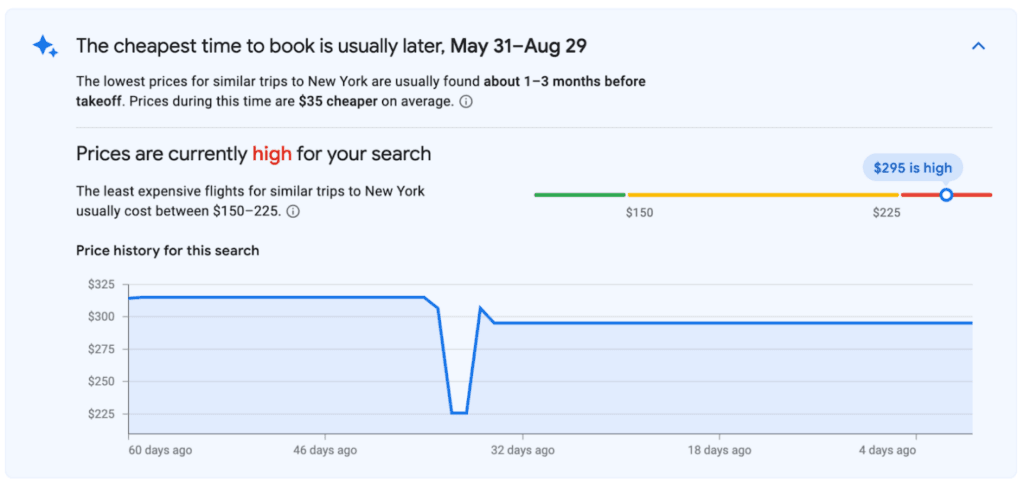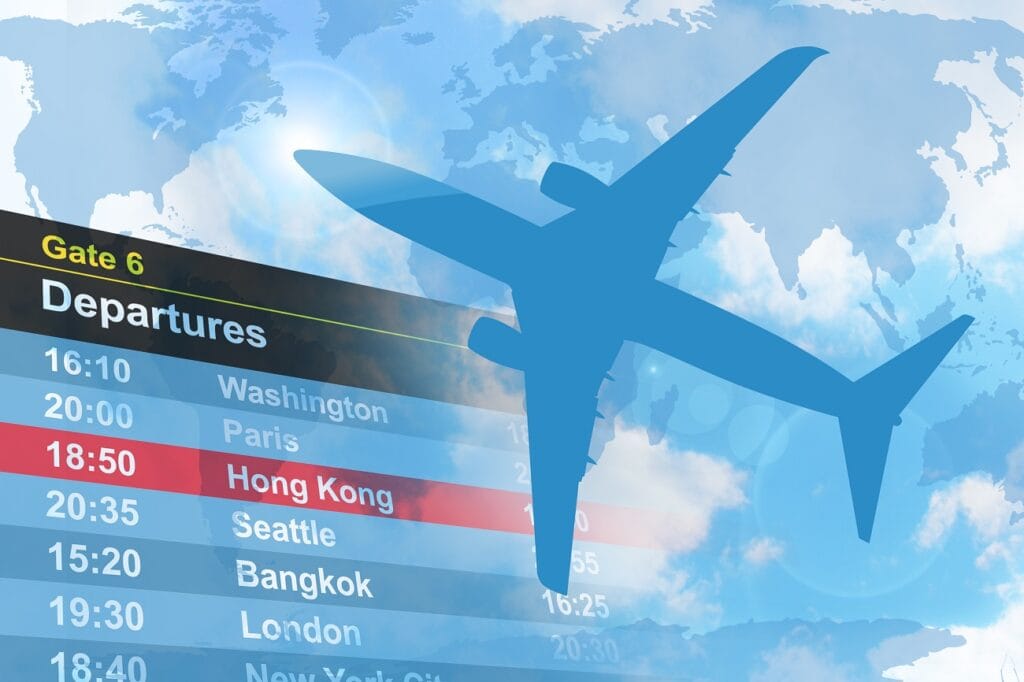Most of us wants to travel on a pocket friendly budget and we spend half of the budget amount on flight tickets, whether it’s a international trip or a domestic trip. So the most expensive item turns out to be flight tickets. The cost of flight ticket determines the cost of one’s trip. Many of us cancel their trips because of the costly flight tickets. But what if I tell you that we can book flight tickets cheaply if we are little careful while booking the tickets. So, in this blog I will share with you 5 secrets to book cheap flights and it works everytime.
Table of Contents
1. Understanding Flight Pricing Trends

1.1 The Role of Demand in Pricing
Flight prices can feel like a roller coaster, fluctuating based on demand. Understanding this can save you a bundle.
- Seasonal Travel: During peak seasons, like summer vacations and holidays, demand spikes, causing ticket prices to soar. Opting for off-peak travel, like visiting Europe in February rather than July, can yield enormous savings.
- Holiday Pricing: Significant holidays often see hiked prices due to increased travel demand. Booking flights around Labor Day or Thanksgiving, for instance, can be much more expensive than flying a week earlier or later.
- Local Events: If there’s a big concert, sports event, or festival happening, be prepared for varying prices. Being aware of local events can help you find cheaper flights by avoiding those crowded times.
1.2 The Influence of Airline Competition
Competition among airlines impacts pricing significantly.
- Comparing Fares: It’s wise to compare fares across different airlines. A quick check of several airline websites can reveal large price differences for the same route.
- Market Entrants: New airlines entering a market often offer lower fares to attract customers, which can drive down prices across the board as established airlines respond with their own deals.
- Pricing Strategies: Airlines use various tactics to stay competitive, such as promotional fares, loyalty programs, and bundled flight deals. Frequent checks can help you snag these bargains.
1.3 Tracking Price Fluctuations
Being proactive can put you ahead of the curve when it comes to flight deals.
- Monitoring Tools: Apps like Hopper and Skyscanner allow you to track prices and alert you to drops, helping you find the best deal without hours of searching.
- Fare Alerts: Most flight search engines let you sign up for notifications on specific routes. Take advantage of this feature to receive timely updates on price changes.
- Analyzing Historical Prices: Some websites provide insights into historical fare trends, helping you gauge the right time to book. Understanding when prices traditionally dip or rise can be incredibly beneficial.
2. Timing Your Purchase

2.1 The Best Times to Book Flights
Knowing when to book can make a world of difference.
- Ideal Booking Windows: Each destination typically has a sweet spot for booking. Domestic flights are often cheapest about 1-3 months in advance, while international trips can see better deals if booked 2-6 months out.
- Last-Minute Deals: While it may seem risky, last-minute deals can sometimes save money, especially if airlines are eager to fill seats. Just be cautious; this isn’t a guaranteed strategy.
- Shopping Days: Tuesdays and Wednesdays are often the best days to find deals, as many airlines release fare sales early in the week. Weekends, in contrast, tend to be busier with family travelers.
2.2 Understanding Flight Search Algorithms
Search algorithms can influence your pricing experience.
- Search Results Priority: Most flight search engines aim to present the best options to you first, but remember that this may not always show the absolute lowest price available.
- Cookies and Fares: Your browser history can affect flight prices. Websites may raise prices if they notice repeated searches for the same routes.
- Incognito Mode: Using incognito or private browsing prevents websites from tracking your searches, giving you a better chance at uncovering low fares without inflated prices.
2.3 Flexibility in Travel Dates
The more flexible you are, the more money you save.
- Flexible Travel Dates: Adjusting your travel dates by just a few days can lead to significant savings.
- Midweek Travel: Flights on Tuesdays or Wednesdays are usually cheaper than weekend flights, making midweek trips a smart move.
- Calendar Tools: Many flight search websites offer flexible date search features or calendar views, enabling you to see the cheapest days around your preferred travel time.
Planning to Travel?
- Booking Hotels: Booking.com, Agoda, MakeMyTrip and Hostelworld.
- Booking Cheap Flights: Skyscanner and Cheapflights.
- Booking Tours: Viator and GetYourGuide.
- Renting a Car: Discover Cars.
- Travel Insurance: Heymondo. Get 5% off today!
3. Exploring Alternative Airports

3.1 Benefits of Using Nearby Airports
Sometimes, the nearest airport isn’t the best choice.
- Cost Differences: Nearby regional airports often charge less for flights than larger airports due to lower operating costs.
- Accessibility: Consider the ease of reaching alternate airports. A slightly longer drive may save you significant money.
- Pros and Cons: While smaller airports can provide cheaper options, factors such as limited flight availability should also be considered.
3.2 Understanding the Scope of Local Airfare
Exploring local airlines can reveal hidden gems.
- Regional Airlines: Regional carriers sometimes offer lower fares, especially if you’re heading to less-traveled cities. Check their websites directly.
- Larger Networks: Look at flights from larger airports within a reasonable distance. You might find lower fares by expanding your search slightly.
- Flight Availability: Regularly explore regional options and availability; they might surprise you with excellent pricing and service.
3.3 Investigating International Connections
Sometimes, flying longer can save you money.
- Hub Cities: Many airlines use hub cities for connecting flights. Booking an indirect route might significantly lower your fare.
- Booking Separately: Occasionally, it’s cheaper to book the international leg of your trip separately. Just make sure you allow enough time between flights for any delays.
- Savings with Layovers: Don’t shy away from layovers; they can turn into money-saving opportunities if planned wisely.
4. Utilizing Travel Hacks

4.1 Frequent Flyer Programs
Loyalty programs can help you achieve even better deals.
- Rewards Points: Learn how to earn and track points effectively through frequent flyer programs. Signing up can create future savings.
- Credit Card Bonuses: Look for credit cards that offer bonus miles or points for travel-related expenditures, effectively giving you “free” flights when you redeem them.
- Miles Usage: Smart usage of your miles can be the difference between a pricey ticket and a free flight. Keep an eye on redemption opportunities.
4.2 Off-Peak Travel Rewards
Traveling during quieter times can lead to discounts.
- Identifying Off-Peak Seasons: Off-peak travel often means fewer tourists and lower prices. For instance, visiting Disney World in January rather than March can yield better rates.
- Promotions: Many airlines offer deals during less-traveled times. Keep an eye out for seasonal promotions.
- Maximize Membership Benefits: If you’re part of a travel club or frequent flyer program, these benefits can often extend into off-peak travel.
4.3 Error Fares and Flash Sales
Sometimes, airlines make mistakes.
- Understanding Error Fares: An error fare is a ticket sold for significantly less than its true value, often due to a typo. Scanning for these opportunities can save you big.
- Finding Error Fares: Follow travel deal websites or social media accounts dedicated to uncovering error fares. Acting quickly is essential since they don’t last long.
- Timing Your Purchases: Airlines run flash sales periodically, so keep your eyes peeled for these limited-time offers that can significantly slash prices.
5. Building Your Own Itineraries

5.1 The Benefits of Using Multiple Airlines
Sometimes breaking those rules can lead you to cheaper options.
- Multi-City or Open-Jaw Tickets: These options allow you to explore different destinations while saving money. For example, flying into one city and out of another can lower your overall costs.
- Cost Comparison: Sometimes, booking flights with different airlines can save money over purchasing a round trip with one carrier.
- Unique Routes: You may stumble upon some uniquely affordable routes when combining airlines, leading to a more scenic and interesting travel experience.
5.2 Utilizing Travel Aggregators
Comparison shopping can lead to better deals.
- Best Flight Comparison Tools: Websites like Google Flights, Kayak, and Momondo allow side-by-side comparisons, helping you identify the best solar fare.
- Understanding Pricing Algorithms: These sites analyze fare history and trends, providing valuable insights into the best times to buy.
- Pros and Cons of Third-Party Sites: While these tools are often great for finding deals, be aware that booking through them can sometimes lead to added fees or complications.
5.3 Customizing Your Travel Experience
Tailor your trip to fit both your needs and your budget.
- Creating Personalized Itineraries: A little planning goes a long way. Create itineraries based on your preferences and budget to find the best price for your trip.
- Travel Agents vs. DIY Planning: While travel agents can sometimes offer valuable expertise, don’t hesitate to explore DIY planning for personalized experiences and price advantages.
- Hidden Fees: Always read the fine print when booking. This helps you steer clear of surprises and ensures you’re aware of any added costs.
Conclusion
Booking cheap flights is not just about luck; it’s a mix of understanding pricing trends, timing your purchases, exploring different airports, utilizing travel hacks, and constructing tailored itineraries. By implementing these practical strategies, you can significantly cut your airfare expenses and enhance your overall travel experience.
FAQs
- What is the best day of the week to book flights?
It’s often found that Tuesdays and Wednesdays are the best days for booking flights, as airlines frequently announce deals on these days. - Should I book a one-way or round-trip ticket?
It depends on the routes and specific offers available. Sometimes, booking two one-way tickets can be cheaper than a round trip. - How far in advance should I book my flights?
It’s generally recommended to book flights at least 1-3 months in advance for domestic travel and 2-6 months for international travel. - Are there any good apps for finding cheap flights?
Yes, apps like Skyscanner, Hopper, and Google Flights can help you identify and track cheaper flight options. - What should I do if I miss a cheap fare?
Sign up for fare alerts on multiple platforms; airlines often rerun sales after a brief period, especially on popular routes.















